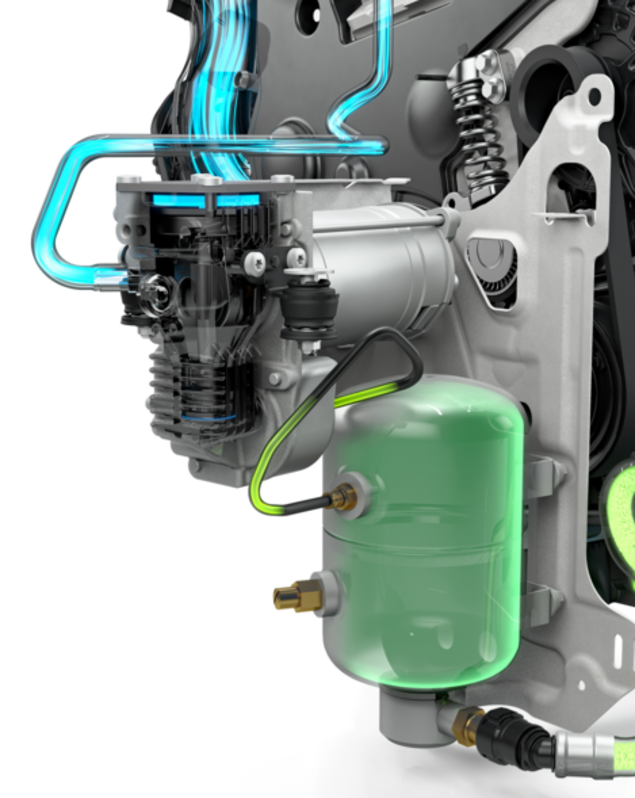Few things in the world of cars suck as much as turbo lag. We want power, and we want it now! Volvo agrees, so with the new diesel 2017 S90 sedan, they’re using an air compressor, a bottle and a valve to let those sweet prancing horses out as quickly as possible. Let’s find out how it works.

Turbo lag has plagued boosted cars since the Jurassic age when Plesiosaurii were rallying Saabs. It’s that feeling of Wait Why Aren’t We Moving There’s A T-Rex Behind Us when you’ve got your webbed-foot planted hard on the gas pedal—until the turbo finally kicks in, and when it does, it’s usually hard.
A Quick Overview On Turbo Lag
When you’re at a low engine speed and load (like cruising on the highway), your engine isn’t making much exhaust pressure, and the turbo’s turbine wheel is spinning nice and slowly. You downshift to pass some joker in a minivan and send your skinny pedal through the floor, making your engine produce more exhaust pressure, spooling up the turbine wheel. That turbine wheel is connected to a compressor, which shoves more air into the engine. Result: more power.
The problem is that all of this isn’t instantaneous. It takes time to build exhaust pressure and it takes time to accelerate, or “spool” a turbo, as the torque from the exhaust pressure onto the turbine has to overcome the rotational inertia of the turbine-compressor assembly, as well as friction and compressor load. This can mean poor transient response times.
Now, modern cars have significantly less turbo lag than those dinosaur Saabs and Porsches had. Automakers have come up with many solutions over the years, including sequential turbos, staged turbos, waste-gated turbos, variable geometry turbos, and many more anti-lag strategies.
And now, Volvo might be taking turbo lag elimination to the next level.
Volvo’s PowerPulse System
Volvo’s S90 already gets a two-stage turbo to help with responsiveness, but to make it even better, Volvo has outfitted their diesel engines with an electric compressor, a tank and a valve, in a system they call “PowerPulse.”
The compressor draws clean air from the airbox and stores it in a two-liter tank. When the driver mashes the gas pedal, the valve opens, sending high-pressure air from the tank into the exhaust stream, quickly spooling up the turbo, sending air charge into your cylinders, resulting in a “pulse” of “power.”
Pretty fancy name there, Volvo.
Here’s how the system looks on the S90:

To prove how well their new “PowerPulse” technology works, Volvo even gave us this bar chart, which shows “meters” on the X-axis. Look at all that power pulsing the Volvo ahead of the competition!

The bad news is that officially, the S90 diesels are not coming to the U.S., which is a shame. This sounds like tech I’d love to try out.
Source: Volvo